I can’t tell you how much I love to hear the 3 AM pre race alarm. Like 95% of the other competitors, I lie awake and waiting for the alarm to break the tense silence from about 1.30am on an Ironman race morning and Ironman Australia was no exception. The alarm sound is relief comparable to crossing the finish line. Finally, no more sitting around resting and waiting. No more questioning last minute equipment choices, race tactics or whether I’ve done enough in my training preparation. It’s all done now. Time to go and enjoy the mental clarity and peace that suffering in a race seems to provide.
Port Macquarie put on a cracking day. Light breeze, cool and sunny. Record breaking conditions if an athlete was going to put it altogether. All week I knew Matt (Dixon- my coach) and I had got my taper right. Heart rate was very responsive and short intervals felt effortless with no sign of lingering fatigue. I couldn’t wait to race which is always a good sign that I’m also mentally ready to dwell in the hurt box.
My year so far was a mixed bag. I got a great few weeks training in before the Aussie Long Course Championships wrestling to a victory with a strong ride making up for an ‘ok’ run. From there, time away for a family wedding and a necessary house move made training consistency tricky. Ironman 70.3 Subic Bay went better than expected despite a real lack of training and I was well in contention until 4kms to go against some of the worlds top notch fellas before fading to 3rd place. I convinced myself that starting my specific Ironman build fresh would be beneficial and I think that proved to be accurate as I certainly wasn’t fatigued on race day. However in my final lead up race, Challenge Melbourne where in contrast to Subic Bay I had a buckets loads of training under my belt I was disappointingly average. We expected some fatigue as I firmly believe for most athletes a race 4-6 weeks from Ironman not on your A game can be part of a good Ironman prep, but I was really not even in the same postcode as Appo and Dan Wilson. Confidence was a little rattled as a year prior I had done Oceanside 70.3, also with a 3rd place but with a performance I was very proud of running a good 7-8 minutes faster for a hilly and accurate 21.1kms than the flatter, slightly short half marathon course in Melbourne. My back had been mildly annoying the past 6 months but in the Melbourne cold it was unbearable which became a big concern for the impending 180kms bent into my unorthodox time trial position at Ironman Oz. Still, as the load and the taper progressed my top end was returning nicely and my concerns diminished. All signs pointed to having a solid day out at Ironman OZ.
I have a deep connection with Ironman Australia. Last year was the first race where I think I was truly able completely ignore the result, and the insanity of the distance, and remain in the present moment the entire day. I affectionately call this state of mind my Mark Allen Reed mindset. For non-tridogs that’s a lame reference to a triathlon great who was known for being the zen master while racing claiming an outstanding 6 Ironman World Championships titles. It might not sound like much, but as a hyper competitive guy with a tendency to transform into the notorious ‘Angry Gnome’ on the race course, finding this peaceful mental state was a massive step for me in Ironman racing. Most significantly, the race will always be associated with the loss of my one my best mates, the universally loved Egg Roll, who passed away a week before last years event. I fully understand and support pros pulling the pin in Ironman when it’s not going their way. For most, it’s a very tough way to make a living. You only have a limited number of times you can truly go to the well in an 8+ hour race in your athletic career and finishing on a bad day can limit the chance of earning a pay check for the weeks that follow and claw back some financial return for the months of work. However Ironman Australia is a race I can never DNF even if I have to crawl to across the finish line.
In contrast to last year, I had the perfect start to the swim. The product of perhaps feeling fresh but more likely to do with not being continually dragged underwater by a fellow competitor . I quickly established my position in 3rd place on the feet of Michael Fox who was comfortably in the draft of Clayton Fettel. Very cleverly, Michael let Clayton ease 10-15 metres ahead of him before dropping a sprint hand grenade to get rid of me and surge back onto Clayton’s feet. I had a good idea it was coming when the gap first opened as Foxy is a very strong swimmer who should be able to stay with Clayto. As the gap opened I considered whether I should sprint with Foxy to get across the gap. In an Ironman 70.3 I would have definitely tried to go with the ‘Foxy’ move but successful or not it would have put me well into the red zone. Something I planned on avoiding early on in the day. Training with Clayton on the reg, I know that on the slim chance I could stay in his draft, it would leave me pretty very depleted for another 7 hours of racing. So the plan was to nestle comfortably into the chase pack.
Unfortunately for me, everyone in the chase had the same idea of staying comfortable so the pace was a little more leisurely than I hoped. After 500m of leading, I rolled to the side and started backstroking hoping that the next in line would pull a turn. David Dellow, aka ‘the Double D’, one of the more underrated Ironman athletes on the circuit mainly because he is one of the last of the old school Aussie pros who hasn’t succumbed to endless self-promotion to increase or sustain sponsorship, had a shoulder injury and is also a very savvy Ironman racer. ‘The Double D’ wasn’t going to be caught out spending any extra effort than is essential early on so moved aside also. Nick Baldwin set out in the lead and pulled us all to the weir where athletes jump out, climb and descend some stairs before diving back in to resume the 3.8km slog. In the brief time we were running up and down the stairs the first signs that I wasn’t in my zen-like state of 2016 and that ‘the angry gnome’ was alive and well appeared as I gave a relatively polite verbal spray to the Double D and 2 x Ironman Aus champion, Paul Ambrose to help share the lead and make the swim pace a little quicker. Both Ambrose and I then tried at different times to swim up alongside Nick to give him a break but he didn’t seem interested and kept plugging along beside us, which slows both people down. Nick appeared to actually be getting quicker the longer the swim went so Ambrose and I gave up and tucked back into his draft. Cheers Nick we owe ya.
I worked through transition methodically ensuring I put on my sleeved aero suit carefully avoiding zip blow out, slapped on my wrist based HR monitor and got pedalling. Again, my suspicion that we had nailed the taper was once again confirmed. Legs were good, HR very responsive. Perhaps I was low on training volume as per our usual yearly plan to ensure absolute peak condition later in year but I would way rather be undertrained and fresh then having a day like the Ironman World Champs last year where I was dead tired from the gun and my heart rate wouldn’t budge into even a conservative race zone. I moved to the front of the chase and began a reasonable tempo. At this point I realised I’de made a mistake by deciding to switch to a 28/11 cassette for this event. For non-cyclists that’s a bigger cassette on the back that gives you a wider range of gears. The down side is that it doesn’t give you as many smaller options in your sweet spot race power range. I was finding that for the 4.1-4.3 watts/kg I planned on sustaining I could either pedal 83-85rpm (revolutions per minute) or 103-105rpm but not in the mid 90s which I’ve found most economical for me. The easier gears were fantastic on the climbs but on the flatter rolling sections I couldn’t find the rhythm I knew had worked for my running off the bike most of last year. Quick side note on cadence so any young players don’t think they now have to pedal in the mid 90s- It’s hugely individual. In general I’ve found strong, heavily muscled athletes do better off a lower cadence as it keeps their heart rate down and body temp lower yet their superior strength means the sustained torque doesn’t negatively affect them while lighter athletes with a good aerobic capacity tend fare better with a higher cadence.
Last year, I couldn’t care less about where other people were in the race such was my internal focus. This year, I couldn’t’ reign in the angry gnome and stop thinking about where other athletes were. With no wind on the course and athletes sitting a legal but very advantageous (yes the rule should change to 15-20m as I’ve argued for years but I won’t go into that again) 10m apart/12m front wheel to front wheel, I was getting restless. Clayton Fettel had put in some smart training this year and I was bothered about the time he was putting into us. I wanted to ride harder but I knew everyone behind would be doing it easier sitting in the legally spaced out pace line. I love racing Ambrose because he always races extremely fair and was also spending a good amount of time pace setting however there were quality athletes behind us playing it cleverly as the rules allow. My plan in this scenario was to wait until 120km and then attack and ride the last 60kms strong. However the angry gnome was bashing my pre race resolutions down with a gnome sized baseball bat and by 40km I had done my first attack. I got a gap but ‘the Double D’ pulled it back. Ambrose and I tried again soon after. This was looking promising as we got 100m clear but then the ‘Double D’, with a level of focus and determination I haven’t seen before on the red maned man of mystery, harnessed us back in once more. At this point, I wasn’t frustrated because at least the match burning was happening by the two other guys I figured were the big overall threats.
At the end of the first lap while ascending the famously steep Matthew Flinders Drive, the 28/11 cassette that was making my cadence problematic on the majority of course proved to be very handy on the steepest climb. I looked back at the top of the hill and realised I had a sizeable gap to the other guys in the group. I put my head down and didn’t look back for another 10 minutes. I was finally out of sight and hopefully out of mind of the other guys. With a sigh of relief I found the Angry Gnome’s voice subside and Mark Allen Reed start projecting some peaceful internal vibes as I looked forward to riding the next 90kms doing what I do best, thinking only about myself. Unfortunately ‘The Double D’ had other plans.
About 30 minutes later my back was starting to tighten and I was breaking aero more regularly to stand up, stomp the pedals occasionally and stretch out. A glance back told me that there was a solitary rider slowly making their way back towards me. Initially I thought it was Paul Ambrose jumping across. A welcome thought, as Ambrose can sure ride well when on song but I felt that provided I didn’t explode on the run, I could gain an edge there. Alas, a photographer broke the news to me that it was the ‘The Double D’, the international man of mystery who alongside his triathlon skillset is known among those close to him for his absolutely sensational baritone voice. When ‘the Double D’ breaks into song people and birds a like are overcome and pause and weep in pure euphoria. Despite having the ‘The Double D’ with me, the Angry Gnome didn’t reappear. If ‘the Double D’ had bridged across before, he could do it again as I wasn’t going to be able to attack harder than before as I had included breaking aero every few minutes for a stretch to keep my back functional for the run. It was fairly controlled riding but I’ve learnt in Ironman that from 120km to 180kms you don’t have to do anything too special except keep the power drop off within 10-20 watts of the first half of the ride. Sounds simple enough but I hear from most athletes that they typically have their first ‘bonk’ (a period of hypoglycaemia where athletes have to slow down for a while to bring back their blood sugar levels) and suffer their first significant power drop off. We suffered no such issue. Clayton Fettel didn’t gain any time over the second 90kms and we soon had 10 minutes over the guys with threats such as ‘The Big Sexy’ McDonald and Ambrose now out of the picture.
Into transition, I handed off my Trek Speed Concept giving it one last affectionate pat before it was taken from my loving gaze. I whipped off my aero speed suit, slid into my Budgy Smuggler and superstitiously laced up the exact same pair of Saucony Zealot ISO shoes that I wore the year prior, hoping that the 2016 winning pair would bring me luck. My hydration belt contained my electrolyte and calorie mix in one bottle and four bottles of the anti-cramp formula ‘HOTSHOT’ in the other. Last year I only took one bottle of HOTSHOT which worked wonders until 45 minutes after my last dose and then consistent cramping held my run back about 5-6 minutes over the final 12kms. This year I really wanted to iron out the cramping issues that plagued the marathon last year.
We hit the run hard which I found confusing. Pre-race I had studied ‘The Double D’s’ marathon pacing in other Ironman races. He was extremely consistent at pulling off one of the fastest runs in most events and I felt that he did so through very smart conservative pacing early on in the marathon. Pacing that would have worked well with my plan and how I prepared for the event. Yet this tall, ruggedly handsome man with sensational vocals was flipping my expectations upside down and whipping along at 3.30-3.35min/km pace. That’s a 2hr30 marathon pace! The voices in my head started competing for attention. Mark Allen Reed was peacefully suggesting that I stick to the planned 3.50-4 min/km pace while the Angry Gnome, who manages to fit in 3-4 expletives into every sentence, told me to go with ‘the Double D’. From a cardio-vascular perspective this pace is still well under lactate threshold and so technically within what should be my Ironman range. However as I was soon to learn the hard way, the purpose of pacing is not just to avoid dehydration or an energy deficit from going too hard aerobically but also to protect the muscles from excessive break down that can override your brain’s will to keep going fast in an attempt to limit further damage.
With the far lower average cadence than I was hoping for in my legs from the 180km ride, from the first step of the run I could already feel that my quads were tender. Nothing I couldn’t’ ignore at this point. For 12kms I let ‘the Double D’ set a red hot pace. By 14kms I could sense him faltering. He was having his first inevitable bad spot and had to slow down. At the same time I ran by my son Oscar who screamed support at the top of his lungs sparking the Angry gnome to suggest I attack. With the boost in emotion Oscar provided I couldn’t resist the suggestion and for 5kms I surged. It felt amazing. The Angry gnome was working in overdrive telling me that I was going to smash the record and run a sub 2.40 marathon. A delusional thought completely outcome based rather then keeping my mind in the process of what I should be doing based off how I had trained. I had put a rapid 2 minutes into ‘the Double D’ but by 19kms I was paying for the effort. The surge had depleted precious glycogen stores and I fell into my first and only energy hole for the race that day. Thankfully in training I’ve put myself in this dark hole many times before and know that with a tactical switch to playing defence for a few kilometres, I can come back fine. The ever-calm Mark Allen Reed peacefully brought my mind back into the moment, I slowed a lot to bring my heart rate back down so I could absorb calories and over the next 2-3kms took every aid station very slowly guzzling coke to bring my energy levels back so that I could get back to a decent pace. The Double D pulled back some time but I still had a reasonable lead. My energy returned and I was back on track.
Energy was back but the discomfort in my quads was becoming intense. Last year I had stuck to a different run technique to my natural style involving a lower leg carry, higher cadence and more shuffle-like style to avoid breaking down the leg muscles too much and make it a non-issue later into the marathon. This run technique is possible to sustain until I go any quicker than 3.50/km and then I have to return to my more bounding Ironman 70.3 technique. Athletes such as Craig Alexander and Andreas Raelert at their peak managed to maintain a beautiful gliding bound run style throughout the whole marathon however they also did 150km + run weeks in their Ironman preparation likely making their muscles more resilient to the persistent pounding. Or perhaps they’re just mentally stronger and can ignore the pain. For my ego’s sake I hope the former.
25kms in and with every foot strike and my quads were screaming at me more and more to slow down. Cursing myself for the mis-pacing I knew that if ‘the Double D’ held together a reasonable pace he was going to take the win. He soon zipped by and I knew from experience that I couldn’t’ override this muscular pain and the victory was lost unless the Double D had an unlikely meltdown. Strangely it didn’t bother me too much at the time as I my mind was far more preoccupied with how I was even going to make it to the finish line. Thinking about my family and Egg Roll always does the trick and I kept ticking the legs over rewarding myself with a short walk at each aid station using the temporary pain relief as a reward for not walking in between aid stations.
Thankfully the pace of our first 21kms meant that even with a very average final 15kms my overall run time was still respectable and I held onto 2nd place with a mixture of utter relief, pride that I didn’t give up and flashes of disappointment that I had gone a little worse than last year. I wish my triathlon progression constantly moved in a smooth linear direction with improvements every event but it never has. Overall the improvement has always head in the right direction but there’s been plenty of backward steps along the way. In the past the backward steps often help me change things to take two steps back in the right direction. The pacing had also left the Double D suffering for a big portion of that run yet he held it together cranking out a 2.48 marathon to take the win and the course record from last year in a seriously impressive performance. Clayton Fettel bounced back from some dark places early in the marathon and came in 3rd resulting in the same podium but a slightly different order from last year.
Immediately after the race, as per my Instagram post, I really wasn’t disappointed. I had rolled the dice with ‘the Double D’ to do something special and it hadn’t worked out. Of course upon later reflection I realised that rarely do athletes do something beyond what they’ve trained for and mentally I had wandered from the attitude that brought me success last year. This year I’ve been more focused on winning and worrying about other athletes then staying in the moment and only thinking about what I needed to be doing right there and then to maximise my performance.
Mixed Emotions post race..
Some big lessons going forward. For further Ironman events and Kona, I’m going to work far harder to better condition the muscles to match my aerobic ability. My key sessions were based around pace and what other athletes do to prepare for Ironman events rather than using my heart rate relative to lactate threshold to train my key sessions which would result in much faster running in training and hopefully result in greater muscle resilience.
Some positive notes starting with my cramping issues from last year. I didn’t lock up once with cramps like the year prior so I’m very confident HOTSHOT has largely solved my cramping issues over the Ironman distance. Another potentially huge move in the right direction brought about by finally getting fed up with my back issues was finally trusting someone to give me a bike fit! A week after Ironman Australia I visited Ryan Williams from 3D bike fit. Drastic changes to my bike position ensued. I was sceptical it would make much of a difference but after averaging out several testing sessions we achieved a whopping 8% power increase for the same HR while moving into what should be a far more aero position. Of course an 8% power increase won’t result in 8% faster times as the resistance of air increases exponentially the faster you go, however there still should be some measurable time gains. I also feel 5 years younger with no back tightness since switching up the position.
From here, I’m switching back to pure Ironman 70.3 training for Ironman 70.3 Cour D’Alene, Ironman 70.3 Racine and Ironman 70.3 Philippines before starting my build for the Ironman World Championships. After viewing the Ironman 70.3 St George results where Alistair Brownlee and Lionel Sanders went insanely fast on what I consider one of the toughest courses I was a little bit despondent as to how the hell I was ever going to compete against these guys at the Ironman 70.3 World Championships while properly preparing for the Ironman World Championships. Given the two events close timing and increasingly different style of training required for both events it’s very rare athletes pull off performances at both championships at their maximum potential. My new bike position has given me a glimmer of hope and a boost in motivation that success at both world championships might be possible. After contemplating just racing Kona, I’m now fully committed to both distances. After all, Australia needs an underdog there to potentially re-create another ‘injustice’ for the phenomenal Lionel Sanders.
I’m so incredibly grateful to my sponsors and team. Big thanks Saucony, Trek, Bontrager, Alaska, HOTSHOT, Roka, Flight Centre Sports and Events, Budgy Smuggler, Transition Cycles, Rudy Project, my manager Evan Gallagher, coach Matt Dixon, extended family and most importantly Monica.
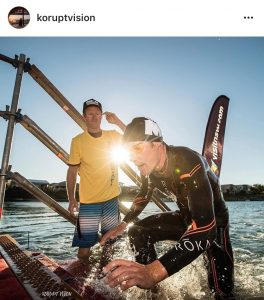
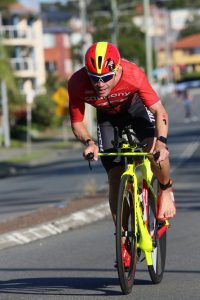
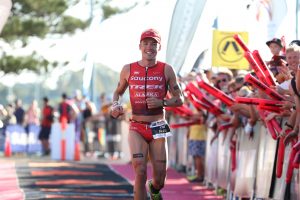
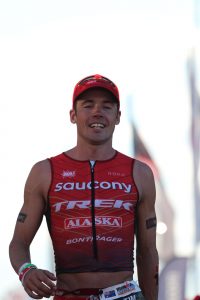
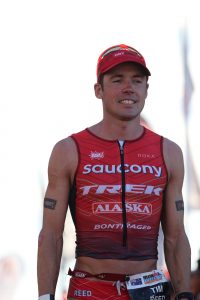
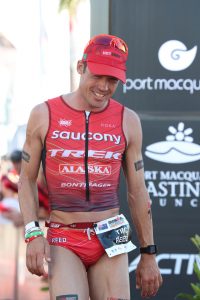
 Please contact:
Please contact: